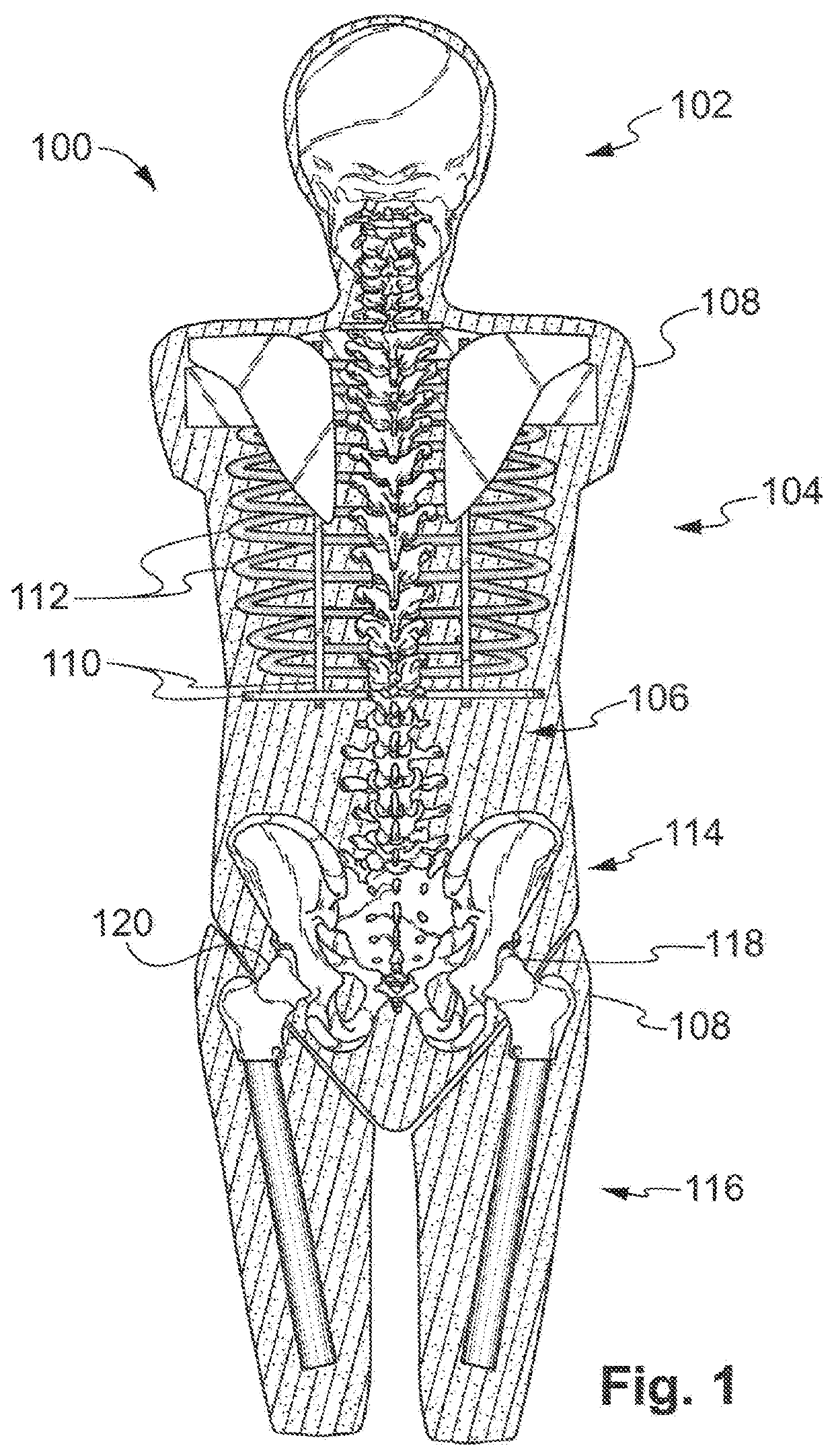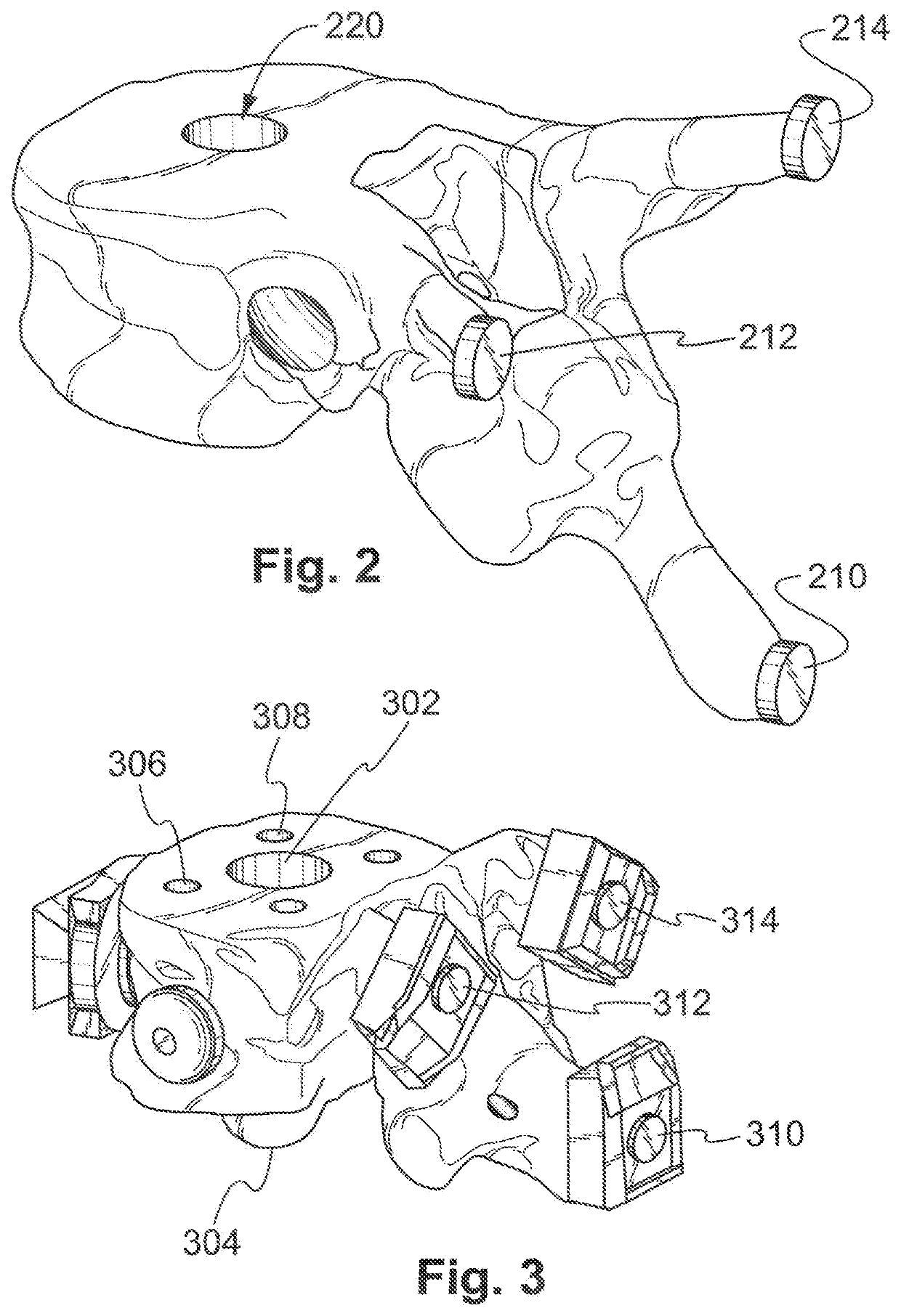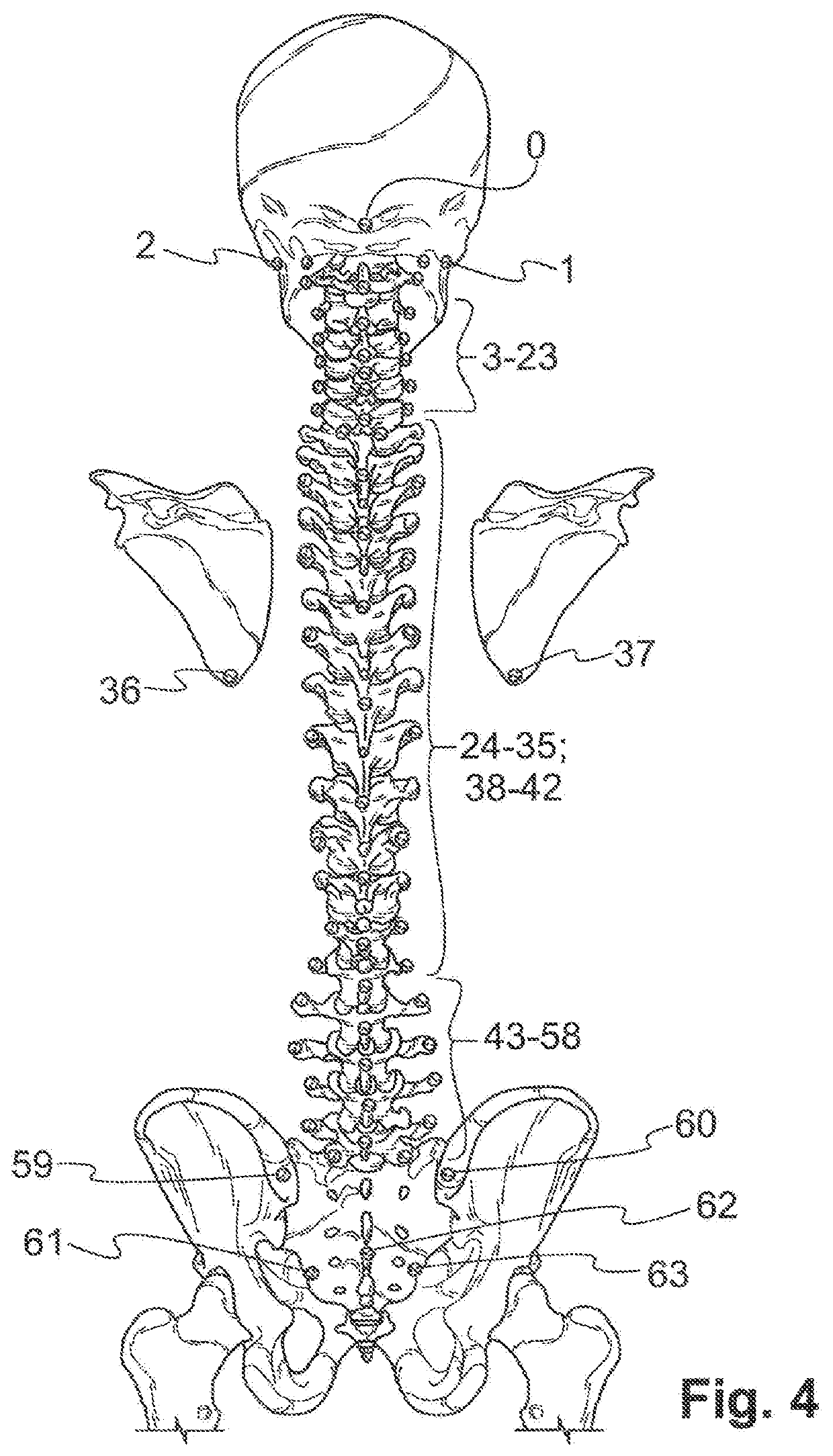Anatomic chiropractic training mannequin with network of pressure sensors
a technology of pressure sensor and mannequin, applied in the field of anatomy mannequin, can solve problems such as injuries of students
- Summary
- Abstract
- Description
- Claims
- Application Information
AI Technical Summary
Benefits of technology
Problems solved by technology
Method used
Image
Examples
Embodiment Construction
[0023]This invention is directed to an anatomically correct mannequin, including a network of electronic sensors providing feedback related to applied pressure in conjunction with chiropractic training or other manual therapy disciplines. The system may be used in an educational setting to help teach students important diagnostic and therapeutic skills. The first skill is to locate posterior skeletal structures using manual palpation. Presented with a target structure, the invention will verify whether the target was located accurately. Another use of the system is to help teach students to identify regions of relative spinal fixation, an important diagnostic skill for manipulative therapies. The invention can also be used as a training dummy for manipulative thrusts. Novice students can thrust on the dummy many times and be given feedback regarding the correctness of the spinal structure being contacted.
[0024]As shown in FIG. 1, the mannequin 100 comprises a life-sized simulacrum i...
PUM
 Login to View More
Login to View More Abstract
Description
Claims
Application Information
 Login to View More
Login to View More - R&D
- Intellectual Property
- Life Sciences
- Materials
- Tech Scout
- Unparalleled Data Quality
- Higher Quality Content
- 60% Fewer Hallucinations
Browse by: Latest US Patents, China's latest patents, Technical Efficacy Thesaurus, Application Domain, Technology Topic, Popular Technical Reports.
© 2025 PatSnap. All rights reserved.Legal|Privacy policy|Modern Slavery Act Transparency Statement|Sitemap|About US| Contact US: help@patsnap.com



